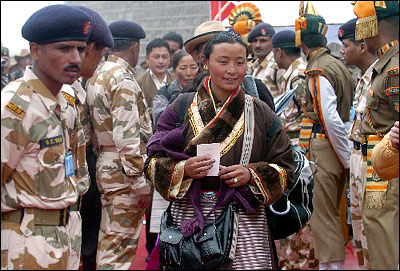In 1978, the Chinese government decided to implement a gradual opening-up policy while setting in motion economic restructure. Beginning in 1980, China established five special economic zones in Shenzhen, Zhuhai and Shantou in Guangdong Province, Xiamen in Fujian Province, and Hainan Province; further opened up 14 coastal cities, a group of border area cities and all capital cities; and set up 15 bonded zones, 54 state-level economic and technological development zones and 53 state new- and high-tech industrial development zones in certain large and medium-sized cities. The result is an all-round, multi-level, wide-ranging setup for opening-up. As these areas adopt different preferential policies, they have served as windows and played a radiation role in developing an export-oriented economy, generating foreign exchange earnings by exporting products and importing advanced technologies.
 |
In 2000, China launched its "Develop the West" campaign. The western region includes nine provinces and autonomous regions, i.e., Gansu, Guizhou, Ningxia, Qinghai, Shannxi, Sichuan, Tibet, Xinjiang and Yunnan, in addition to Chongqing Municipality. It accounts for two thirds of China's total area and 22.8 percent of its total population. Western China is rich in minerals, energy (including hydropower), tourism and land resources. Viewed as a whole, eastern China on the lower Yangtze has a long coastline, totaling 14,000 km; and the western part of the upper Yangtze, bordered by more than 10 countries, has 3,500 km of land frontiers. Hence it is believed that western China will become the next golden area for opening-up.
As the Chinese government was working out an overall plan for the development of the western region (the plan also covering Inner Mongolia and Guangxi Zhuang autonomous regions), it formulated a suite of preferential policies and measures for encouraging foreign businesses to invest there. For instance, to encourage foreign-funded enterprises in central and western China, income tax will be collected at the reduced rate of 15 percent for three years following the end of the implementation period of the existing preferential tax policy, and that the income tax rate for exporting enterprises will be exempt or reduced to a minimum 10 percent. Furthermore, the top level governments of the west enjoy authority equivalent to that of the coastal provinces and municipalities, and may approve foreign-funded projects with an investment of less than US$30 million on their own.
In recent years, China's western region has become a foreign investment hot spot. Annual investment reached US$2 billion and is still growing steadily. By the end of 2005, there were 3,000 foreign-funded companies in the western region and some multinationals had entered logistics, IT, commerce, finance, insurance and trade, optimizing and upgrading western China's industrial structure.

